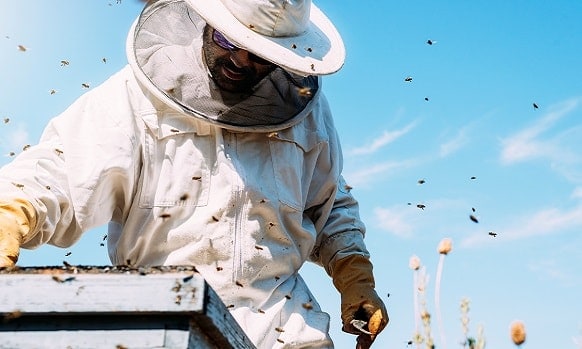Beekeeping is an incredibly rewarding and captivating endeavor, allowing individuals to connect with nature and contribute to the well-being of these essential pollinators. However, as exciting as beekeeping can be, it is crucial to prioritize safety. Central to a beekeeper’s protective gear is the beekeeping suit, an indispensable barrier against bee stings and potential injuries. In this guide, we will delve into the importance of beekeeping suits for new beekeepers, exploring their components and offering valuable tips to help ensure a safe and enjoyable beekeeping experience. By understanding the significance of a well-designed beekeeping suit, new beekeepers can embark on their journey with confidence and peace of mind.
Why Wear a Beekeeping Suit?
Beekeeping suits serve a crucial role in protecting beekeepers from potential stings and maintaining a safe working environment. Bees can become defensive and aggressive when disturbed, especially during hive inspections. Wearing a beekeeping suit helps create a physical barrier between the beekeeper’s body and the bees, reducing the risk of stings, allergic reactions, and potential injuries.
Components of a Beekeeping Suit
A typical beekeeping suits consists of several components designed to offer full-body protection:
Full-Length Suit: Made of thick, breathable fabric, the suit covers the entire body, from the neck down to the ankles. It should fit loosely to prevent bees from reaching the skin.
Veil: Attached to the suit, the veil protects the beekeeper’s face and neck. It is usually made of fine mesh or netting to allow for visibility while preventing bees from accessing the beekeeper’s face.
Gloves: Beekeeping gloves are essential for protecting the hands from stings. They should be made of thick leather or rubber, extending up to the forearm for maximum coverage.
Boots: Durable boots that cover the ankles provide protection for the lower legs and feet. Beekeepers should choose comfortable boots with non-skid soles to ensure stability.
Choosing the Right Beekeeping Suit
When selecting a beekeeping suit, there are a few factors to consider:
Quality and Durability: Invest in a suit made from high-quality materials that can withstand the rigors of beekeeping. Look for reinforced seams and sturdy zippers.
Ventilation: Beekeeping can be physically demanding, and wearing a suit for extended periods can cause discomfort. Opt for suits with ample ventilation, such as mesh panels or breathable fabric, to help regulate body temperature.
Sizing and Fit: It’s crucial to choose a suit that fits properly. A loose-fitting suit will prevent bees from reaching the skin, while a tight suit can be restrictive and uncomfortable. Ensure the suit allows for easy movement and flexibility.
Ease of Use: Consider suits with user-friendly features such as adjustable straps, elasticized cuffs, and easy-to-remove veils. These elements contribute to convenience during hive inspections and maintenance.
In conclusion, a beekeeping suit is an indispensable tool for new beekeepers, providing vital protection against bee stings and ensuring a safe beekeeping experience. By investing in a high-quality suit that fits well and offers adequate ventilation, beekeepers can focus on their work without compromising their safety or comfort. Regular maintenance and cleaning will help prolong the lifespan of the suit, ensuring its continued effectiveness. Remember, a beekeeping suit is not just a piece of clothing; it is a shield that allows beekeepers to connect with these remarkable creatures while minimizing the risks involved. Embrace your beekeeping journey with confidence and enjoy the wonders of beekeeping.










